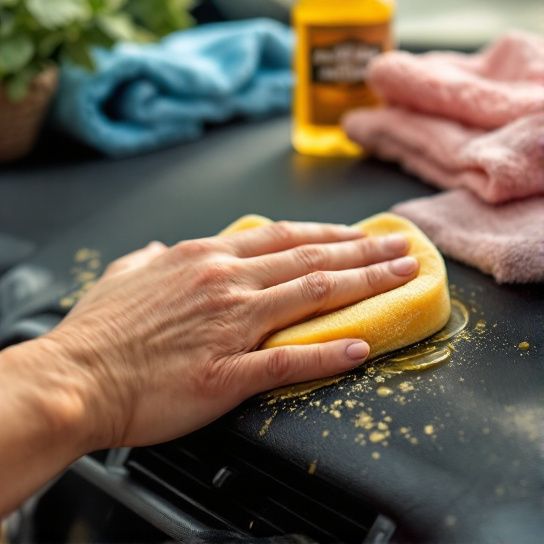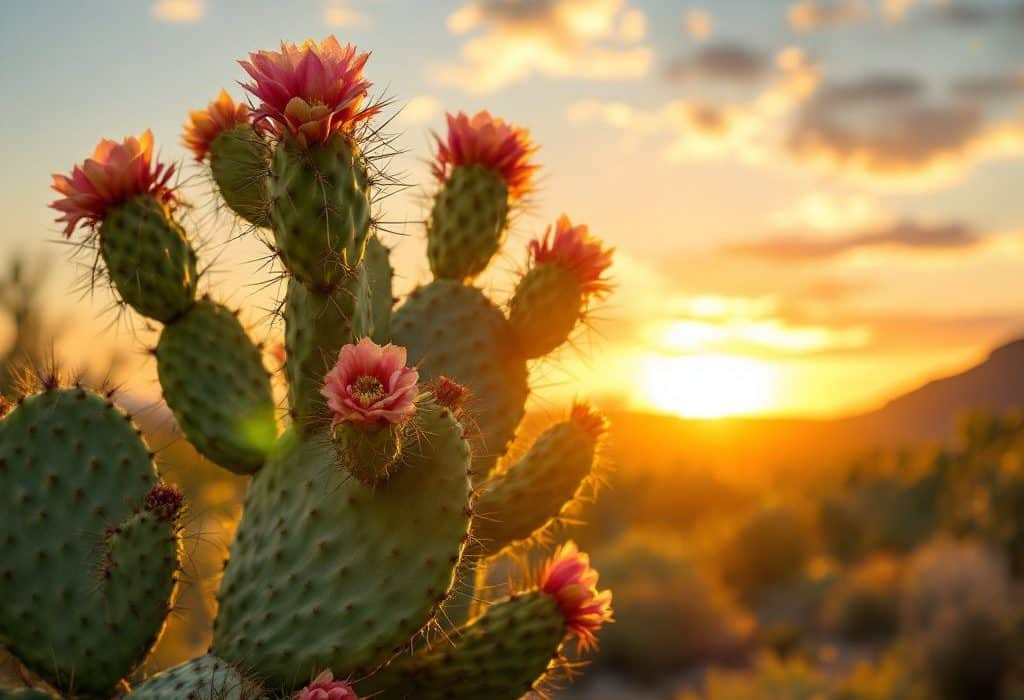—
Have you ever wondered how desert plants, like the hardy cactus, survive in such harsh conditions? It’s fascinating, right? They not only endure but actually thrive in environments that would leave most plants dried up and done for. Now, imagine capturing that resilient power for your skin. That’s where prickly pear oil comes into play. If you’ve been on the lookout for natural beauty products with that kind of staying power, trust me, you’re in the right place.
So, let’s dive into this deserty delight. Prickly pear oil, known by some as the beauty secret of the desert, is rapidly trending in the world of skincare. If you’re not already excited about the prospect of slathering cactus juice on your face, bear with me, because by the end of this chat, you just might be.
What Exactly is Prickly Pear Oil?
Don’t let the name fool you—prickly pear oil is no novelty item. It’s an ultra-luxurious oil made from the seeds of the prickly pear cactus, scientifically known as *Opuntia ficus-indica*. This cactus isn’t just for desert landscapes or cowboy films—its nutrient-rich oil is packed full of benefits for your skin.
Why Prickly Pear Oil Stands Out
Here’s the kicker: prickly pear oil contains the highest amount of vitamin E of any beauty oil on the market. You heard me right. That means it’s insane for hydration and healing. Plus, it’s rich in essential fatty acids like omega-6 and omega-9, as well as antioxidants. All these components wrap up into one nifty package to significantly boost your skin’s health and shine.
Now, I’m guessing the desert landscape is not the first thing that jumps to mind when you think of moisture, but prickly pear oil is about to change that. It’s counterintuitive, but this oil truly offers unbelievable hydration, making it a secret weapon among natural beauty products. Imagine the staying power on your skin, especially in the dry winter months!
How Prickly Pear Oil Enriches Natural Beauty Products

Natural beauty products have taken the skincare world by storm. And it makes complete sense—so many people want products that are kinder to their skin and the environment. Prickly pear oil fits right in. It provides an effective alternative to synthesized ingredients that might cause irritation.
Hydration and Healing
The moisturizing capacity of prickly pear oil makes it ideal for all skin types, particularly for those who suffer from dryness. Bounce and glow, here you come! And if you have sensitive skin struggling with redness or irritation, give this a whirl. Its soothing properties work wonders and visibly minimize these concerns over continuous use.
Combatting Aging
Everyone’s looking for that miracle fix—the fountain of youth in a bottle. While prickly pear oil isn’t magic, its high antioxidant content, along with potent vitamins, can significantly delay the appearance of aging signs. It aids in smoothing out those annoying fine lines and bolsters firmness and elasticity. Not to say you won’t age—but you’ll sure age well!
Lightens and Brightens
Blotches, age spots, hyperpigmentation—you name it; prickly pear oil can help lighten that up. This is thanks to its vitamin K content, which contributes to evening out skin tone. So if you’re checking yourself out in the mirror and cringing at those patchy areas, this oil could really become your vanity’s mainstay.
Elevating Your Skincare Routine with Prickly Pear Oil
So how do you integrate this wonderful nectar of the desert into your ritual? Surely, there’s some preparation for optimal results, right? Absolutely. Let’s hammer out a basic step-by-step so you can start basking in that natural radiance.
Step 1: Timing is Everything
Work prickly pear oil into both your morning and nighttime routine. On those nights when you feel like caring for your skin is just one more thing you have to do, remember, consistency breeds results.
Step 2: Less is More

This oil might scream luxury, but that doesn’t mean you need to drench your face. A couple of drops on clean skin after cleansing and toning will do just fine.
Step 3: Layer It Up
Layering is essential in skincare, and oils typically go last if you’re using moisturizers, as they seal the goodness in. Use prickly pear oil as the final touch to lock down your skincare stash beneath it.
Step 4: The Application
The best way to apply is to gently pat (not rub) the oil onto your face. This way, you improve absorption without tugging at your skin, potentially causing fine lines before their time.
The Role of Cactus Power in Natural Beauty Products
There are so many natural beauty products out there to choose from. But if you’re looking for the ones providing raw, unadulterated power, cacti, and desert botanicals have a foundational role to play. Think about it: prickly pear oil represents survival, endurance, and strength. Who wouldn’t want that vibe splashed onto their face?
Uniqueness in Its Origin
Glycerin-based synthetic products have been around the block, seen and renovated countless times. What’s compelling about prickly pear oil is its source—it’s like bottling the essence of the desert’s resilience.
Eco-Friendly and Sustainable
What’s surpassing luxury when paired with sustainability? Of course—prickly pear oil production is non-disruptive to ecosystems, and when derived organically, respects the natural lifecycle of this resilient plant. That’s a green tick right there if there ever was one.

Common Mistakes to Avoid When Using Prickly Pear Oil
Of course, like any relationship, things can go awry if you’re not careful. Here are some pratfalls to watch out for to ensure your dalliance with this delightful oil ends in nothing short of romance.
- Overuse: Seriously, tread lightly. A little goes a long way. Dumping more doesn’t amplify benefits; it might just clog pores.
- Skipping the Spot Test: First-time users—test it on a small patch of skin to rule out allergic reactions. Seems basic, yet important.
- Neglecting Consistency: Use it regularly. Dipping in sporadically won’t cut it. Rituals make a difference.
- Expecting Instant Results: Be realistic—give it time. Patience is key, sometimes as short as a couple of weeks; other times a bit longer.
Key Takeaway: Prickly Pear Oil is a Natural Beauty Powerhouse
Wrapped up in its resilience, prickly pear oil is a star player in the world of natural beauty products. With moisturizing prowess, a foundational anti-aging capacity, and skin-brightening properties, it brings a celebrated arsenal to your skincare routine. Just remember to unpack its power slowly and integrate it thoughtfully, ensuring you tap into every ounce of its desert-proved vitality.
Your Invitation to Try
If you’re contemplating adding prickly pear oil into your regimen, now’s the time to take the plunge. Think of it as extending the wild spirit and nurturing robustness of the desert itself to your self-care routine. And hey, say what you will about cacti, but when it comes to skincare, these prickly wonders really know how to bring on the bloom—literally and figuratively!
Through leaves mercilessly heated under the sun, towers a testament to survival, thriving amidst adversity. Incorporating natural beauty products like prickly pear oil pales conventional expectations of skincare, tapping into a force that not only serenades the skin but reverberates strength past the superficial. So go ahead, and bring the desert’s power close—your skin may just thank you.
Frequently Asked Questions
What does it mean if a product is labeled as “natural” in the beauty industry?
If a product is labeled as “natural,” it does not necessarily mean it contains no synthetic chemicals. The term “natural” is not defined by the U.S. government, so it’s important to read the ingredient list carefully. Natural cosmetics typically contain ingredients found in nature, such as mica, silica, and clay, without significant chemical alteration[1][3].
Why aren’t all cosmetics natural if they are supposedly better for the skin?
Cost is a significant factor; synthetic ingredients like talc, mineral oil, and phthalates are much cheaper than organic ingredients. Additionally, natural products often lack the preservatives and emulsifiers needed to maintain product stability and texture, which can make them more challenging to formulate[1][3].
How should I choose natural beauty products, especially if I have sensitive skin or allergies?
When choosing natural beauty products, it’s crucial to read the ingredient list carefully and look for certifications from organizations like ACO, ECOCERT, or the USDA. Even natural ingredients can cause allergies, so it’s important to patch test products before using them fully. Be wary of long chemical names that sound synthetic, and consult the ingredient list for known irritants[1][3][5].
What are the potential benefits and challenges of using natural beauty products?
Natural beauty products can be gentler on the skin and more environmentally friendly, but they can also be more costly due to the use of ethically sourced ingredients and careful formulation. Natural products may not work for everyone, and their effectiveness can vary based on skin type and conditions. Additionally, natural skincare can have variations in consistency and texture due to the natural ingredients used[3][5].
References

